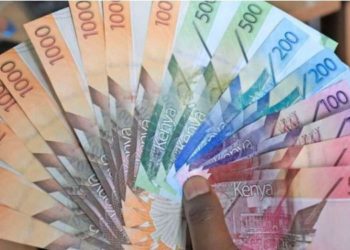Kenya has undergone a seismic shift over the last two decades, moving from handling heavy cash to an expanded access of financial tools where they can transact just at a click especially for those with no bank accounts, redefining how Kenyans save, spend and borrow thereby fostering economic empowerment. This invention, the launch of Safaricom’s M-pesa has since elevated Kenya to a global leader in mobile money adoption, revolutionizing financial inclusion and changing how millions of Kenyans are managing their finances.
With active mobile accounts of 82.4 million as per the CBK reports in December 2024 showing a subscriber rate of 152.6% against a population of 52.4 million, it becomes clear how mainstream financial services in Kenya are. For a clear picture, Safaricom reports in 2024 indicated that M-pesa processed a whooping KES 40.2 trillion. The figures show mobile money dominance and how they enable daily transactions and utility payments.
The economic effect is therefore undeniable, mobile money has driven financial inclusion of Kenyans to the top in Africa with the FinAccess Survey by CBK stating that financial inclusion in Kenya sits at 84.8% as at December 2024. Unlike banking that ‘discriminates’ against the low- income groups, mobile money will only require a basic phone and an Identity card making it a lifeline for the underserved.
Beyond financial inclusion, Mobile money can be directly linked to to start ups of businesses as it fuels entrepreneurship and drives economic growth. Businesses such as bodaboda depend on platforms like lipa na M-pesa to easily receive payments from their clients and to access credit for expansion or business expenses like Fuliza – Safaricom’s overdraft feature. According to the state of industry report on mobile money by GSMA recently released in March 2025 Kenya’s economy received a significant boost from mobile money services, contributing KES 3.1 trillion to the country’s Gross Domestic Product. The report reinforces previous positions showing how mobile money performs a key role in driving economic growth.
Despite the mobile money successes, serious challenges remain. Low financial literacy levels threaten both mobile money penetration and financial inclusivity in Kenya according to the FinAccess reports. Secondly, higher taxes imposed on mobile money services such as the 20.0 % proposed excise duty imposed on mobile money transfer services in the Finance Bill 2024 that was later lowered to 15.0% only does harm as they limit engagement on mobile money platforms. The government must therefore be restrained on imposing higher taxes on mobile money services as it will be costly for Kenya’s financial inclusivity dream. However, with continued partnerships between local banks and fintechs the future of mobile money is promising!


















